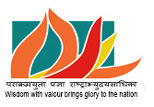Digitization and economic focus can stanch that wound, ensuring Waqf serves its intended beneficiaries: the marginalized, not the encroachers.
Growing up in a small town where Waqf properties dotted the landscape—mosques, graveyards, and crumbling community halls—I always wondered why these assets, meant for the greater good, seemed stuck in time. The Waqf (Amendment) Bill, 2024, feels like an answer to that childhood curiosity. As a researcher who’s tracked land management trends, I’m convinced that the government’s focus on digitization and economic utilization isn’t just practical—it’s transformative. With 8.72 lakh Waqf properties covering 37.39 lakh acres, as per the WAMSI portal, the stakes are high, and the potential is even higher.This bill isn’t about control; it’s about unleashing Waqf’s capacity to serve communities while protecting it from decay.The numbers paint a grim picture of the status quo. Revenue from Waqf properties has plummeted from ₹166.65 crore in 2019-2020 to a shocking ₹9.92 lakh in 2024-2025. That’s not a typo—₹9.92 lakh from assets that could, with proper management, generate over ₹12,000 crore annually, as the Sachar Committee estimated back in 2006. Today, with more properties registered, that figure could be even larger. Encroachments (58,890 cases), legal disputes (31,999 cases), and a leasing system that’s collapsed—down from 3,233 leased properties in 2015 to 875 in 2025, with rental income dropping to zero—tell a story of neglect.The government’s response? A centralized digital portal, geotagging, and a revamped leasing framework. To me, this isn’t bureaucracy—it’s a lifeline.Digitization is the cornerstone here. I’ve seen how manual records, often outdated or lost, create chaos in property management. The bill mandates that Mutawallis upload Waqf details to a central portal within six months (extendable by another six), covering everything from registration to audits and litigation. This isn’t just about paperwork—it’s about transparency. Imagine a farmer in Bihar or a shopkeeper in Hyderabad checking online whether a Waqf property is encroached or leased fairly. Geotagging ties these assets to land revenue records, making boundaries crystal clear and disputes less likely. As someone who’s pored over land title conflicts, I can’t overstate how revolutionary this is—only 1,088 of 8.72 lakh properties have registered Waqf deeds. Clarity on ownership is the first step to protection. Then there’s the economic angle. The bill pushes for a digitized leasing system with market-based pricing, turning Waqf properties from liabilities into revenue engines. High-value urban plots could become IT parks or affordable housing, while rural lands could support community projects.Public-private partnerships (PPPs) are encouraged, a model I’ve seen work wonders in other sectors. The goal? To fund education, healthcare, and skill development for the poor—Muslims and beyond. The WAMSI data shows 4.02 lakh properties are Waqf by User, often undocumented and underutilized. By mandating Waqf deeds and scrapping vague provisions like Section 40 (which let Boards arbitrarily claim properties), the bill ensures these assets are legally secure and economically viable. Critics might call this commercialization, but I see it as stewardship. Waqf exists for pious and charitable purposes, yes, but it’s not meant to sit idle. The government’s reforms—assigning Collectors to verify registrations, applying the Limitation Act to curb endless litigation, and auditing via CAG-appointed officers—aren’t about interference; they’re about accountability. With 75% of Telangana’s Waqf land encroached, as Akbaruddin Owaisi noted, or 60% of Maharashtra’s lost to illegal occupation, the current system is bleeding. Digitization and economic focus can stanch that wound, ensuring Waqf serves its intended beneficiaries: the marginalized, not the encroachers. This isn’t a perfect fix—change never is. But as someone who believes in progress over stagnation, I’d argue the bill’s vision is worth rooting for. It’s about turning Waqf into a living, breathing resource—not a relic of mismanagement.
(The views expressed are the author's own and do not necessarily reflect the position of the organisation)

